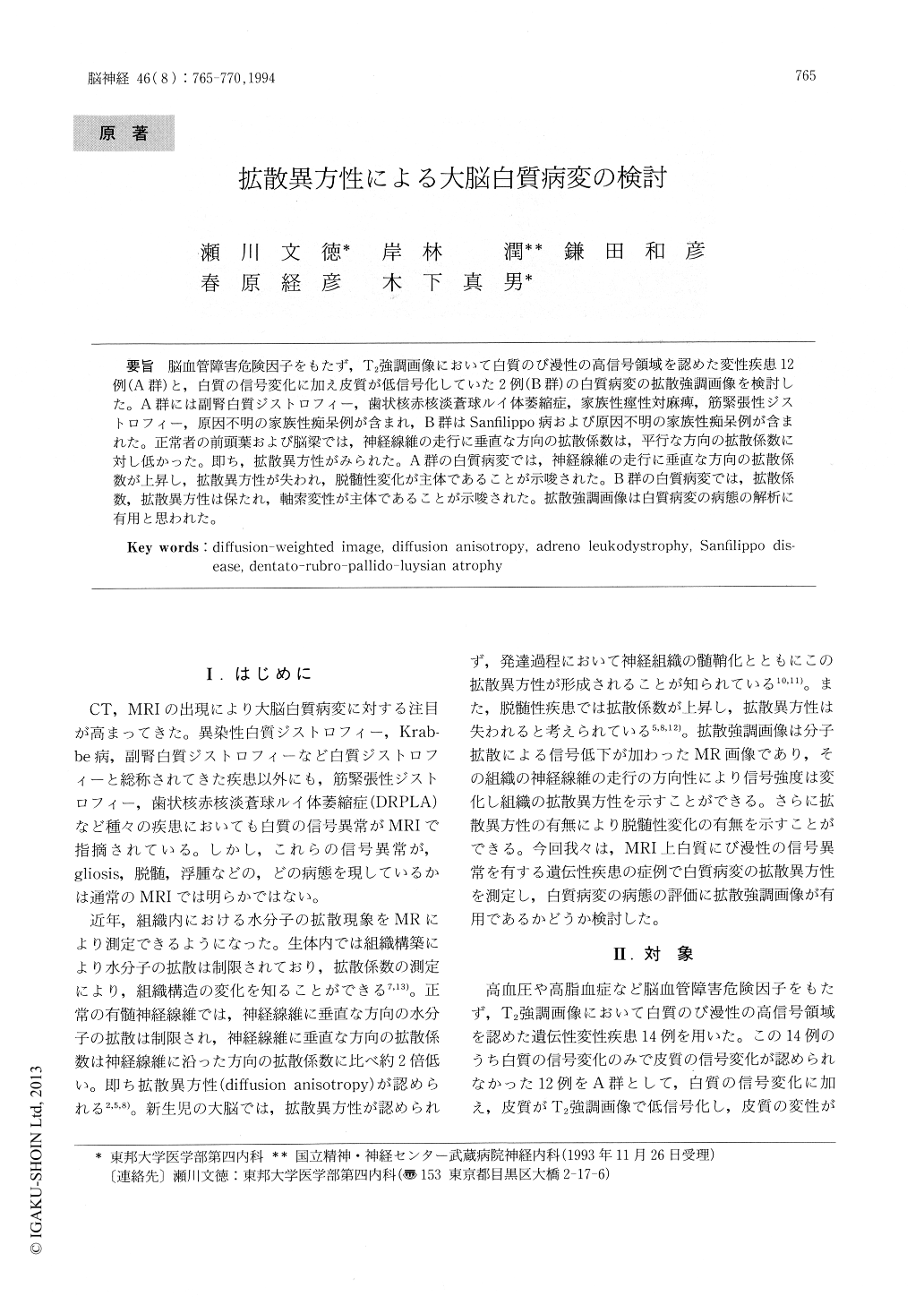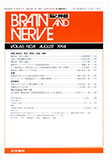Japanese
English
- 有料閲覧
- Abstract 文献概要
- 1ページ目 Look Inside
脳血管障害危険因子をもたず,T2強調画像において白質のび漫性の高信号領域を認めた変性疾患12例(A群)と,白質の信号変化に加え皮質が低信号化していた2例(B群)の白質病変の拡散強調画像を検討した。A群には副腎白質ジストロフィー,歯状核赤核淡蒼球ルイ体萎縮症,家族性痙性対麻痺,筋緊張性ジストロフィー,原因不明の家族性痴呆例が含まれ,B群はSanfilippo病および原因不明の家族性痴呆例が含まれた。正常者の前頭葉および脳梁では,神経線維の走行に垂直な方向の拡散係数は,平行な方向の拡散係数に対し低かった。即ち,拡散異方性がみられた。A群の白質病変では,神経線維の走行に垂直な方向の拡散係数が上昇し,拡散異方性が失われ,脱髄性変化が主体であることが示唆された。B群の白質病変では,拡散係数,拡散異方性は保たれ,軸索変性が主体であることが示唆された。拡散強調画像は白質病変の病態の解析に有用と思われた。
Diffusion MRI studies were performed on 14 patients with diffuse high- signal lesions of the cere-bral white matter on T2-weighted MR images. There were two patients with adrenoleukodystro-phy, four with dentato-rubro-pallido-luysian atro-phy, three with familial spastic paraplegia, two with myotonic dystrophy and three with dementia of unknown origin. In addition, a patient with of Sanfilippo disease and one of the three patients who exhibited dementia of unknown origin were also found to be low-signal in the cerebral cortex T2-weighted MR images.

Copyright © 1994, Igaku-Shoin Ltd. All rights reserved.


